by Deep Green Resistance News Service | Mar 13, 2016 | Toxification
Featured image: A huge proportion of the Nahua tribe have been affected by the poisoning, which causes anemia and acute kidney problems © Johan Wildhagen
By Survival International
Up to 80% of a recently-contacted tribe in Peru have been poisoned with mercury, raising serious concerns for the future of the tribe. One child has already died displaying symptoms consistent with mercury poisoning.
The source of the Nahua tribe’s poisoning remains a mystery, but experts suspect Peru’s massive Camisea gas project, which opened up the tribe’s land in the 1980s, may be to blame. The project has recently been expanded further into the Nahua’s territory, prompting fierce opposition from the tribe.
Rampant illegal gold mining in the region is another potential source of the mercury poisoning.
The Nahua, who live inside a reserve for isolated Indians in south-east Peru, have also been suffering from acute respiratory infections and other health problems since they were contacted.
Other indigenous communities in the area may also have been affected by mercury contamination, but tests have not been carried out. Some of these communities are uncontacted or extremely isolated. It is understood that the Peruvian Health and Environment Ministries have been aware of the problem since 2014.
AIDESEP, the main indigenous organization in Peru’s Amazon, is lobbying the government to carry out full health checks on the Nahua and other tribes in the area, and to conduct a proper investigation into the cause of the poisoning. A study was conducted by the Ministry of Health in spring 2015, but the results have yet to be published.
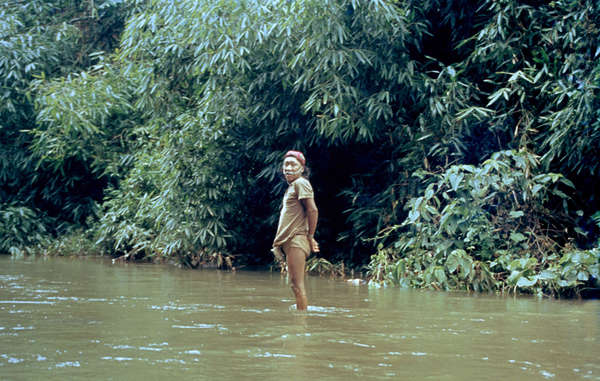
The Nahua were first contacted in the 1980s. Subsequent epidemics killed many members of the tribe
© Survival International
Nery Zapata, an indigenous leader, said: “Mercury contamination is extremely damaging to human health because its effects are irreversible. The health department must investigate this, and stop the contamination that is poisoning the indigenous population.”
Survival has also written to the Peruvian Ministries of Health and Culture urging them to publish the results of their study and put an end to the catastrophe.
Survival’s Director Stephen Corry said: “The Peruvian authorities have always been pretty indifferent to the problems facing their indigenous communities, and the total neglect they’ve shown in this case just proves it. Had this poisoning taken place in Lima, I don’t expect they would have been quite so casual in their response, or as slow to publish the results of their earlier findings. It’s nothing short of scandalous that they are not doing more to sort out this crisis. It’s also very telling that they are withholding information about it from the public.”
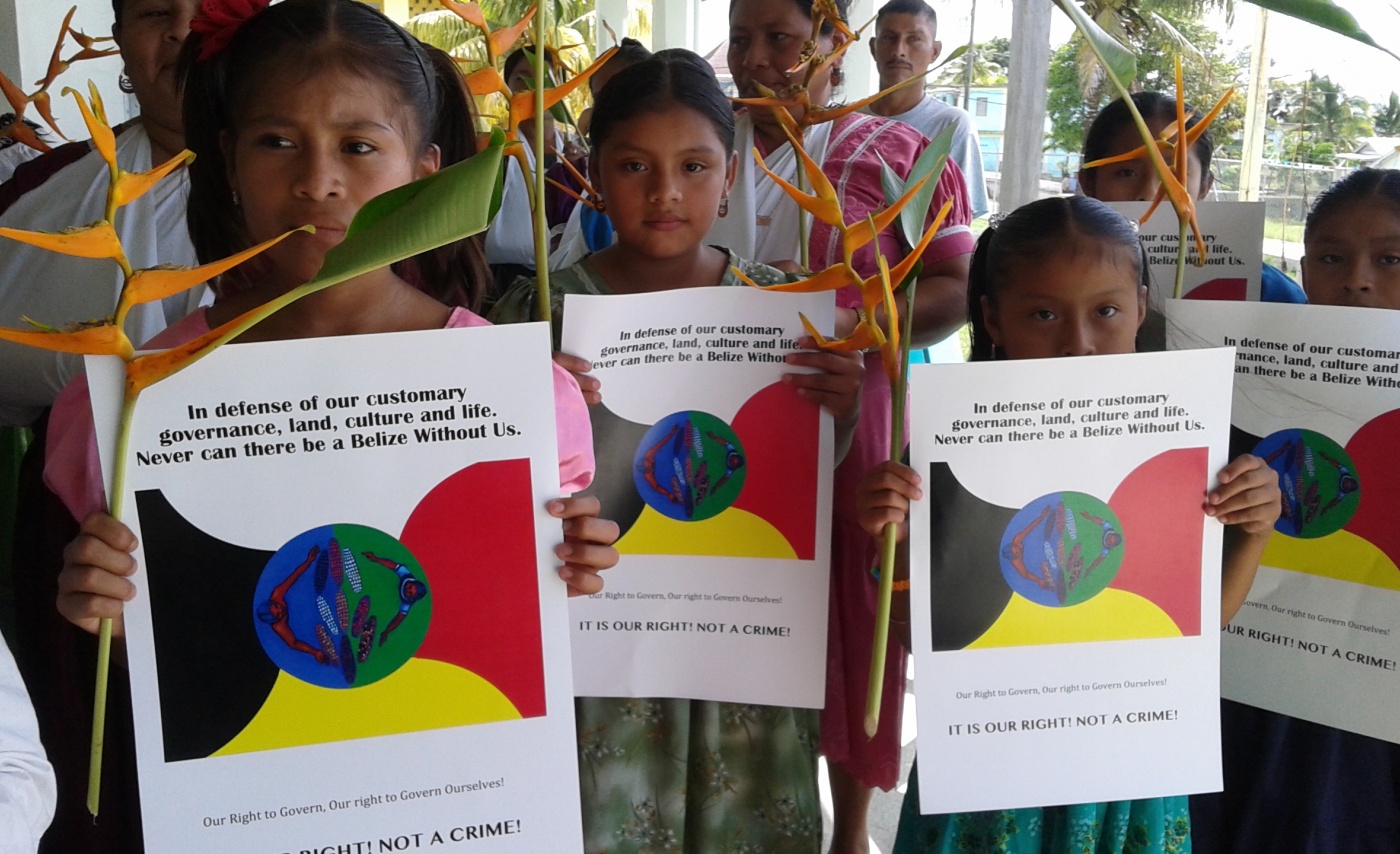
by Deep Green Resistance News Service | Mar 12, 2016 | Indigenous Autonomy
By Cultural Survival
Thirteen Maya villagers will be standing trial in Belize on March 30th, 2016, under fabricated charges. Like many Indigenous leaders fighting to protect their lands, they are being criminalized for these actions, and may face prison time.
On the early morning of June 24th, 2016, traditional leaders of the Maya people of Southern Belize were violently awoken in their homes by police. Charges were brought against 13 people, including 10 farmers, two traditional Maya leaders, and Q’eqchi community spokesperson Cristina Coc, advisor to the traditional leaders and mother of two.
The Maya leaders’ alleged crime relates to the defense of the Uxbenka archaeological site, a sacred site to the Maya people, located within traditional lands titled to the Maya people under national and international laws. The disputed conflict arose after Mr. Rupert Myles, a Belizean citizen, illegally constructing a house on the grounds of the ancient temple against the advise of the community. According to the Maya community members, the Belize authorities failed to respond to their call to stop Mr. Myles from doing further harm to the site. The community explained that Mr. Myles was invited to a community meeting to resolve the conflict where he became unruly and village police detained him. However, Myles later accused the Mayas of physically assaulting him at the community meeting, a claim the Maya leaders strongly deny.
Since 2007, Santa Cruz have legal customary ownership of customary lands, where Uxbenka is located, as result of a decision from the Supreme Court that the government of Belize never contested. To date, the government has not taken an steps to protect the property rights of the Santa Cruz Mayas in accordance with their customary land tenure system.
Recently, the Caribbean Court of Justice handed down a judgement ordering the government of Belize to demarcate and register Maya village lands, and to protect them against incursions by outsiders. ‘’The Santa Cruz conflict and subsequent arrests is a direct assault to the spirit of the court order, and shows bad faith engagement by the government,’’ explained Program Coordinator for the Maya Leaders Alliance, Pablo Mis.
The laws of Belize prohibit building on or damaging any archeological site. In May 2015, a letter was sent to the Belize Institute of Archaeology (NICH) from the Director of the Uxebnka Archaeological Project, in which he expressed his concern that Mr. Myles had: “bulldozed into the archaeological platform (…). He has also built new buildings, and has burned vegetation to the very edge of the steel plaza, further endangering the ruin. The bulldozing activity has irreparably damaged the platform.” However despite this, since the charges were brought, Belizean authorities have continued to allow Myles to maintain construction and ongoing desecration of the archeological site held sacred to the Maya.
The Maya leaders stand by their actions. Indigenous People’s right to defend their sacred sites is backed by the UN Declaration on the Rights of Indigenous Peoples. Article 11.1 states that Indigenous Peoples have the right to protect past manifestations of their cultures, such as archaeological and historical sites. Article 11.2 requires States to provide redress with respect to their cultural property taken without their Free, Prior and Informed consent or in violation of their laws traditions, or customs. “The Maya villagers will continue to defend these cultural heritage sites that are important to all Belizeans,” explained the Maya Leaders Alliance in a press release.
The situation is being closely monitored by international human rights bodies, including the UN Special Rapporteur on the rights of Indigenous Peoples, Ms. Vicky Tauli-Corpuz. “I am concerned by the inaction of the Government of Belize to assist Maya villagers to protect their property rights in the face of threats to those rights,” she expressed in a press release, explaining, “It appears as though the repeated requests to local police by Santa Cruz village leaders for assistance in removing the individual from the archaeological site within their village lands, went ignored.”
Listen to an interview with the Special Rapporteur:
Friends of Santa Cruz 13 are urgently seeking funds to cover legal counsel to defend their 13 community members on March 30th. See their call for donations here.
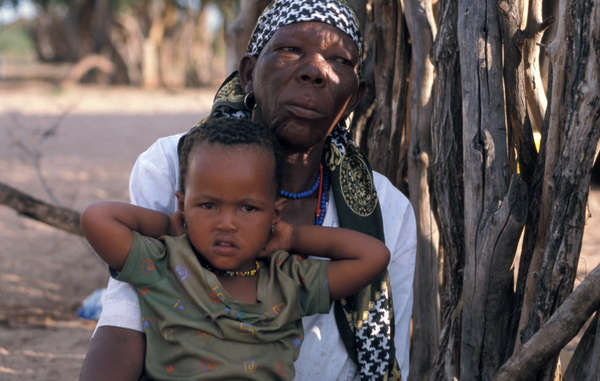
by Deep Green Resistance News Service | Mar 11, 2016 | Colonialism & Conquest
Featured image: Botswana government resettlement camps are poorly supplied, and diseases like HIV/AIDS are rife. © Fiona Watson/Survival International
By Survival International
Survival International has launched a campaign calling for an end to a draconian system in Botswana which has broken Bushmen families apart and denied them access to their land. Critics such as veteran anti-apartheid activist Michael Dingake have compared the system to the apartheid-era pass laws.
The call comes in the fiftieth anniversary year of Botswana’s independence.
After having been brutally evicted and forced into government camps between 1997 and 2002, the Bushmen won a historic court victory in 2006 recognizing their right to live on their land in the Central Kalahari Game Reserve.
Since then, however, this right has only been extended to the small number of Bushmen named in court papers. Their children and close relatives are forced to apply for permits just to visit them, or risk seven years in prison, and children born and brought up in the reserve have to apply for a permit when they turn 18. Many fear that once the current generation has passed away, the Bushmen will be shut out of their land forever.
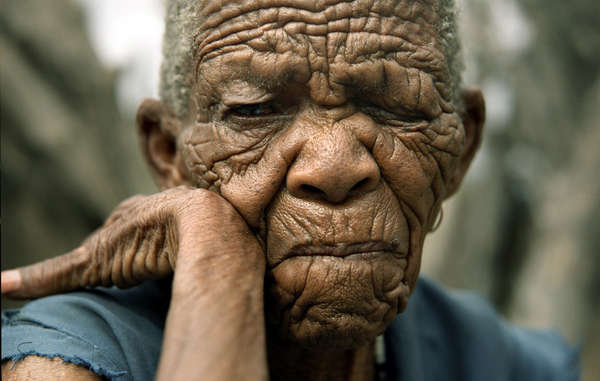
Most Bushmen are still forced to live in government resettlement camps, rather than on their land in the Central Kalahari Game Reserve
© Dominick Tyler
On the subject of the fiftieth anniversary, one Bushman told Survival: “I don’t even know anything about these celebrations. They are doing this so that people will not think they are a bad government. They are celebrating; we are not. We’re still feeling the same way. They’ve been celebrating for the last 49 years.”
Survival’s Director Stephen Corry said: “The Botswana government has viciously persecuted the Bushmen for decades, first with violent evictions and then with a permit system designed to break families apart. If Botswana still wants to be seen as a “shining light” of democracy in Africa, it needs to listen to the Bushmen, uphold its own court’s ruling and end this appallingly unjust restriction on the Bushmen’s right to live on their ancestral land in the Central Kalahari reserve. I hope that this historic year will mark the end of the decades long persecution of the Bushmen.”
by Deep Green Resistance News Service | Mar 10, 2016 | Biodiversity & Habitat Destruction, Movement Building & Support
By Wildlands Defense
Two months have gone by in a blur since the Bundy Militant Seizure of Malheur National Wildlife Refuge. The Refuge was taken under the cover of cowboy hats. Public lands ranchers have always been at the front of western land grab efforts, as Bernard DeVoto described.
Malheur brought unsavory players engaged in a medusa-headed effort to seize control of public lands into full public view. Proliferating militias, “constitutional sheriffs,” and various crackpot lecturers were suddenly out in public view, all on board with the land privatization agenda.
WLD’s Natalie Ertz and Kate Fite traveled to Malheur to join a Protest opposing the Bundy Seizure. We hiked on the Refuge, where Militants “on patrol” attempted to intimidate us. We met up with the Center for Biological Diversity folks who had been at Malheur for many days, and several other Boise people who came out for the event. (3rd video)
We had the privilege to speak with leaders of the Burns-Paiute Tribe. We witnessed a surreal Militant ceremony where New Mexico rancher Adrian Sewell renounced his grazing permit. At the end of this, Pete Santilli tried to incite an armed crowd against an environmentalist by claiming he was an FBI agent.
Just as we returned home, we learned of a Land Seizure Conference in Boise only a few days away – “Storm Over Rangelands”, with Kanosh Utah attorney Todd MacFarlane, a member of the militia-like Harney County Committee of Safety, and others.
We worked to organize a Protest march, and documented the
conference, which preached there is no such thing as public land – grazing on BLM land establishes a “right” for the cattlemen, so the land is no longer public.
Members of the Bundy Cowliphate have now been arrested. But the Land Seizure movement remains in high gear. The fight to protect public lands is now more important than ever. At least three Bills have been introduced in the Congress to give states control of federal lands.

Cottonwood creek – Owyhee Field Office, Idaho BLM. Monitoring cage illustrates typical degree of forage removed by livestock that would otherwise stabilize stream-banks, purify water, and be available to wildlife. (Photo: Brian Ertz)
There are myriad other efforts chipping away at public lands and public lands protections in Congress and state Legislatures across the West.
This is a very important time in the fight to protect wild lands and wildlife in the west. Please support our frontline efforts to protect public lands.
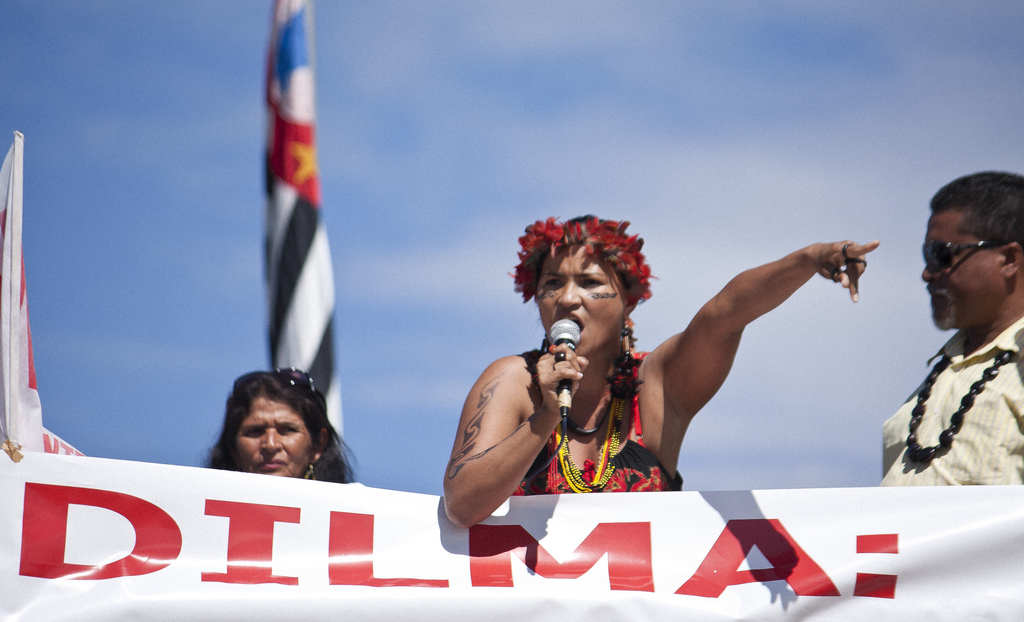
by DGR News Service | Mar 8, 2016 | Protests & Symbolic Acts, Strategy & Analysis
Featured image: Sheyla Juruna/flickr
By Derrick Jensen / Deep Green Resistance
Let me say upfront: I like fun, and I like sex. But I’m sick to death of hearing that we need to make environmentalism fun and sexy. The notion is wrongheaded, disrespectful to the human and nonhuman victims of this culture, an enormous distraction that wastes time and energy we don’t have and undermines whatever slight chance we do have of developing the effective resistance required to stop this culture from killing the planet. The fact that so many people routinely call for environmentalism to be more fun and more sexy reveals not only the weakness of our movement but also the utter lack of seriousness with which even many activists approach the problems we face. When it comes to stopping the murder of the planet, too many environmentalists act more like they’re planning a party than building a movement.
For instance, there’s a video on YouTube of supermodels stripping, allegedly to warn us about global warming. How better to warn us than for a supermodel to shimmy out of her clothes to the accompaniment of a driving rock beat? The tagline beneath the video says, “No matter what your politics are, I think we can all get behind the notion of supermodels stripping.”
Well, not me. The video reinforces the values of a deeply misogynistic culture, where women’s bodies are routinely displayed for consumption by men, where pornography is a 90 billion dollar industry and the single largest commercial use of the internet. And in a movement that already loses women in droves because they’re objectified, harassed, raped, and silenced by men they’d considered comrades, do we really want to use recruiting tools that further this objectification?
Contrast the supermodel strippers with the Message from Sheyla Juruna, also on YouTube. A spokesperson for the indigenous Juruna peoples of the Xingu River in Brazil, Sheyla Juruna stares straight into the camera and says: “The Belo Monte dam is a project of death and destruction. It will decimate our populations and all of our biodiversity . . . We’ve already attempted various forms of dialogue with the government, doing everything we can to block this project, but we have not been heard. I think that it is now time for us to go to war against Belo Monte. No more dialogue. Now is the time to make more resolute and serious acts of resistance against this project.”
I guarantee that Sheyla Juruna did not become an activist for the fun and sex.
What’s more, the “fun and sexy” approach to environmentalism attempts to mobilize techniques that were developed for selling products toward building a movement. Showing a woman’s orgasmic face as she picks up a bottle of fabric softener may influence some people to purchase that brand. But becoming an activist is an entirely different process from buying fabric softener. The former requires fortitude, discipline, and dedication, while the latter requires four dollars to purchase the “natural brand that makes your laundry fluffy, cuddly, and static-free.”
In the arena of public relations, the U.S. military understands all too well something that environmentalists completely fail to grasp: How many recruiting ads have you seen selling the military as fun and sexy? None. An adventure, yes. Service to the community, yes. The few, the proud, yes. All of which, by the way, could and should be said about activism. Recruitment based on fun and sex will attract those who are in it for the fun and sex. Which means that either there will be a very high rate of attrition among such recruits or, far worse, the activism itself will become superficial enough to retain them. It ought to be obvious but in case it’s not: You can’t build a serious movement on superficiality.
The problems themselves are neither fun nor sexy, and the work of resolving these problems is anything but superficial. Organizing is hard work, sometimes tedious, often enraging, and, at this point in the ongoing murder of the planet, nearly always heartbreaking. Sheyla Juruna’s message isn’t about fun and games. Her message is about life and death — her own, that of her people, and that of the land without whom her people are no longer themselves.
Unfortunately, the notion that activism (they never dare call it resistance) has to be fun and sexy pervades the entire environmental movement, from the most self-styled radical to the most mainstream reformist. I have in my hands the most recent issue of the Earth First! Journal, which includes a photo from the most recent Earth First! Rendezvous (events that have a well-deserved reputation for drunken debauchery) depicting young men and women making a naked human pyramid. Remind me what this has to do with stopping this culture from killing the planet? Can you imagine Freedom Riders making coed naked human pyramids, painting their faces, or bringing papier-mâché puppets to sit-ins?
Or consider a recent campaign involving college students stripping to their underwear (do you see a theme?) and running around their campuses. A promotional article titled “Expose Coal Company Lies — With Your Underwear” begins, “Who doesn’t love a good cause that you can support by taking off your pants?” The “project” is a partnership between the Sierra Club and a “stylish underwear brand” called PACT. The Sierra Club, we are told, reports: “Over the past few weeks, students from coal-powered campuses have already used the underwear line in conjunction with organized events such as flash mobs, where students spontaneously [sic] strip down to their ‘Beyond Coal’ underwear, and a race to renewables, a cross-campus underwear run to advocate for the use of cleaner fuel sources.” An embedded video of the “underwear flash mob” is so thoroughly embarrassing (and depressing) that I truly hope you don’t look it up. Beneath the video, the text reads, “Hats Pants off to the Sierra Club and PACT!”
Do I really need to explore what’s wrong with (and creepy about) Sierra Club leaders and underwear makers encouraging young people to take off their clothes, much less pretending this is activism? I’m thinking about a recent global warming campaign where “3,000 people in New Delhi formed an enormous elephant threatened by rising seas — a plea to world leaders not to ignore the ‘elephant in the room.’” I’m thinking about face painting, and I’m thinking about puppets. And I’m thinking how spectacle supplants reality.
I’m also thinking about a conversation I had with some First Nations people in Vancouver, British Columbia, who described how, during the anti-Olympics protests, some Indian warriors were standing firm, alongside some of their nonindigenous allies, facing down police over the desecration of their lands. And they looked behind them and saw a physical separation between themselves on the one hand, and a big cohort of mostly white protesters on the other. But the separation was far more than physical, because the people in front were all dead serious, and behind them were any number of people wearing bunny costumes or running around in cardboard models of bobsleds.
When and why and how did partying and spectacle and debauchery become a substitute for serious political organizing and resistance? How did taking off one’s pants and running around become a political act? And where does dignity fit into any of this? There is, of course, a role for absurdity in political discourse. But the role of absurdity in political discourse is to ridicule and humiliate those in power, not ourselves.
The Jews in the Warsaw Ghetto Uprising took up arms in defense of their lives. The Shawnee war chief Tecumseh took up arms in defense of his people and his land. Harriet Tubman risked her own life to free her people. We, on the other hand, have a long way to go to form a serious resistance movement.
Originally published in the January/February 2012 issue of Orion.
First published online here.






